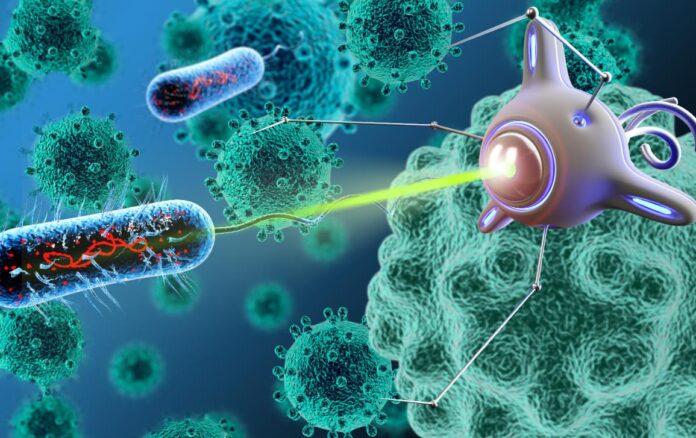Nanotechnology, the science and engineering of materials at the nanoscale, has captured the imagination of scientists, engineers, and the general public alike. At its core, nanotechnology deals with the manipulation and control of matter at the atomic and molecular level, enabling the creation of new materials, devices, and systems with unique properties and functionalities. Its applications span a wide range of fields, from medicine and electronics to energy and environmental conservation. In this article, we will delve into the captivating world of nanotechnology, exploring its applications and the groundbreaking innovations it has brought about.
Nanotechnology finds its roots in Richard Feynman’s famous lecture, “There’s Plenty of Room at the Bottom,” delivered in 1959, where he envisioned the possibility of manipulating individual atoms and molecules. Over the past few decades, advances in nanotechnology have brought Feynman’s vision closer to reality, revolutionizing various industries and opening up new avenues for scientific exploration.
In medicine, nanotechnology has made significant strides, promising breakthroughs in diagnosis, treatment, and drug delivery. Nanoparticles, with their unique physical and chemical properties, can be designed to selectively target cancer cells, delivering drugs directly to the site of the disease while minimizing side effects. Additionally, nanosensors can be used for early detection of diseases by detecting biomarkers in body fluids. Furthermore, researchers are exploring the potential of nanorobots, tiny devices capable of navigating through the human body to perform targeted tasks, such as repairing damaged tissues or delivering precise doses of medication.
The electronics industry has also benefited immensely from nanotechnology. As electronic devices continue to shrink in size, nanoscale materials and components have become essential. Nanoelectronics, which involves the manipulation of individual atoms and molecules to create electronic devices, holds the key to faster, smaller, and more efficient electronics. Carbon nanotubes and graphene, for example, have shown tremendous potential as building blocks for future transistors, enabling the development of ultra-thin and flexible electronics with exceptional performance. Moreover, nanotechnology has led to advancements in display technologies, energy storage, and nanoscale sensors, transforming the way we interact with electronic devices.
Energy is another area where nanotechnology is making a significant impact. The quest for clean and sustainable energy sources has led to the development of nanomaterials and nanodevices that enhance energy conversion and storage. Nanoscale materials can improve the efficiency of solar cells by capturing a broader spectrum of sunlight and reducing energy loss through various mechanisms. Additionally, nanotechnology is enabling the development of advanced battery technologies with higher energy densities, longer lifetimes, and faster charging capabilities. These advancements are crucial for the widespread adoption of electric vehicles and the integration of renewable energy sources into the power grid.
.jpg)
Environmental conservation is yet another realm where nanotechnology is playing a pivotal role. The efficient removal of pollutants from air and water is a pressing global challenge, and nanomaterials offer innovative solutions. Nanoparticles with catalytic properties can break down harmful pollutants into harmless substances, while nanoscale filters can selectively remove contaminants from water. Furthermore, nanotechnology is facilitating the development of energy-efficient and environmentally friendly manufacturing processes, reducing waste generation and improving resource utilization.
Beyond these key areas, nanotechnology has the potential to impact various other fields. In agriculture, nanoscale sensors and delivery systems can enhance crop yield and reduce the use of pesticides. In textiles, nanocoatings can impart water repellency, stain resistance, and antimicrobial properties. In construction, nanomaterials can enhance the strength and durability of concrete and other building materials. The possibilities are truly endless, limited only by our imagination and understanding of the nanoscale world.
The progress made in nanotechnology owes much to the innovative research and collaborations happening around the globe. Governments, academia, and industries are investing heavily in nanotechnology research and development, recognizing its transformative potential. With increasing investments and interdisciplinary collaborations, we can expect to witness even more remarkable breakthroughs in the years to come.
However, as with any rapidly advancing field, nanotechnology also raises concerns about its potential risks and ethical implications. The manipulation of matter at the atomic scale brings forth questions regarding the long-term effects of exposure to nanomaterials and the environmental impact of their production and disposal. It is essential to strike a balance between technological progress and responsible development, ensuring the safe and sustainable implementation of nanotechnology.
In conclusion, the world of nanotechnology is an awe-inspiring realm of endless possibilities. From medicine and electronics to energy and the environment, nanotechnology is revolutionizing industries and pushing the boundaries of what is possible. With its unique ability to control and manipulate matter at the atomic and molecular level, nanotechnology holds the key to solving some of humanity’s most pressing challenges. As researchers continue to unravel the mysteries of the nanoscale world, we can look forward to a future shaped by the remarkable applications and innovations that nanotechnology will bring.

